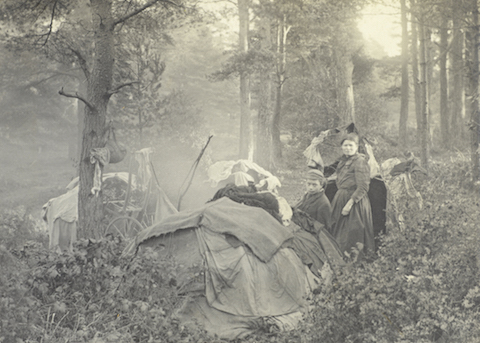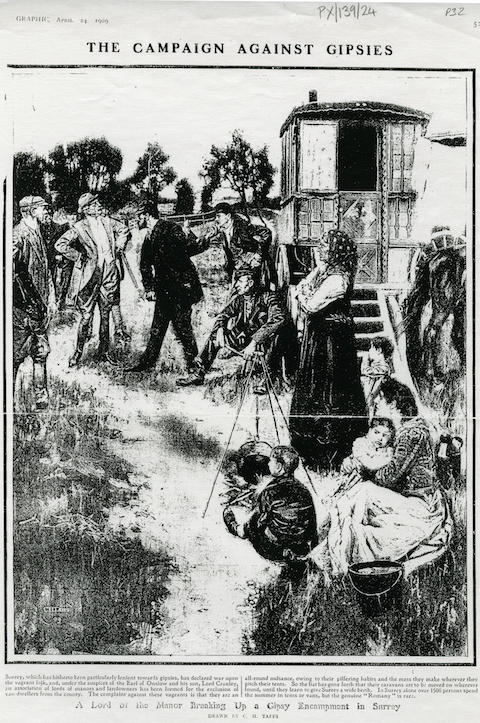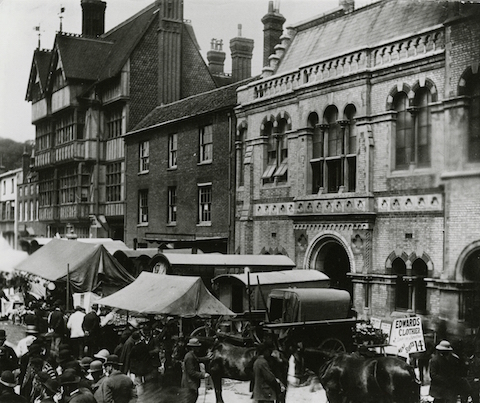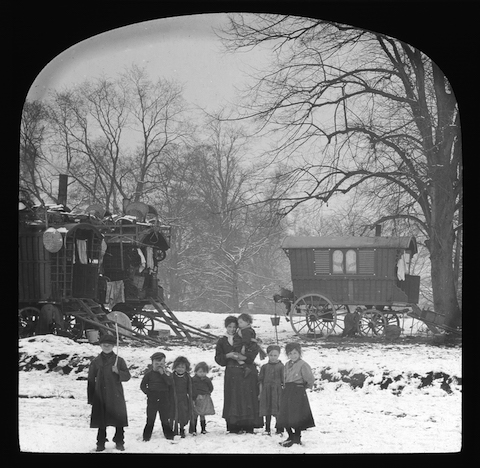 Abraham Lincoln
If given the truth, the people can be depended upon to meet any national crisis...
Abraham Lincoln
If given the truth, the people can be depended upon to meet any national crisis...
 Guildford news...
for Guildford people, brought to you by Guildford reporters - Guildford's own news service
Guildford news...
for Guildford people, brought to you by Guildford reporters - Guildford's own news service
Book Review: Their Day Has Passed – Gypsies In Victorian And Edwardian Surrey
Published on: 27 Apr, 2018
Updated on: 21 Dec, 2020
By David Rose
 Back in the 1910s certain Surrey landowners were putting pressure on the Chief Constable to instruct his officers to remove Gypsy-travellers from their land.
Back in the 1910s certain Surrey landowners were putting pressure on the Chief Constable to instruct his officers to remove Gypsy-travellers from their land.
But he was resisting, saying he would not do so unless the Gypsies were breaking the law by a breach of the peace, for example.
This new book reveals a wealth of detail of the way of life of travelling people throughout Surrey over a century ago. The author, Alan Wright, has undertaken extensive research and uncovered many facts, piecing together a story that has never been told before.
It is a fascinating, detailed read, that is not only of great importance to our knowledge of the county’s history, but charts a way of life that, a decade into the 20th century was beginning to change, in particular the ways the ‘settled’ community in Surrey viewed Gypsy-travellers.

Gypsies camping in the Hurtwood. All images from the book and courtesy of the Surrey History Centre.
The author notes that the origins of the book lies in work he has undertaken for the Surrey History Centre in Woking to identify material held in its archives that might be relevant to unravel the story of Gypsies in the county.
He must have trawled through thousands of documents, reports, local and national newspaper stories. Although he admits that facts were difficult to uncover, but he has done a great job here.
The book contains six main chapters. One and two explores the question of when did Gypsy-travellers appear in Surrey; Chapters three and four seek to establish how widespread their presence actually was; chapters five and six look at their lifestyle and how they earned a living; chapters seven and eight focus on prejudices and perceptions of the travelling community; chapters nine to 11 show how institutions and leaders within the county sought increasing control over the Gypsy-travellers; while chapter 12 is a neat conclusion using three case studies to show some of the difficulties faced by researchers into the subject.
For years travelling people had been accepted by the ‘settled’ population of counties like Surrey, as they set up camps along roadside verges, in woodland, and so on, selling their wares and being employed on farms harvesting crops such as soft fruit, vegetables and hops.

An illustration from the Graphic magazine from 1909 featuring Lord Onslow trying to break up a Gypsy camp.
However, by the turn of the 20th century a different attitude to them was emerging. Despite Surrey landowners such as the Onslows, the Brays and the Lovelaces, calling for police action, the Chief Constable of Surrey, Captain Mowbray Lees Sant, was a voice of reason. He warned against general persecution of so-called nomads, saying they differed widely as to their class, trades, respectability, and so on.
In 1913 Surrey Police undertook a survey of Gypsy-travellers across the county on behalf of Surrey County Council. Details in this survey have also proved most valuable to the author.
Baptism records have also provided the author with details: The baptism of Annie Harris, the daughter of a travelling tin man, is recorded in Horsell as far back as 1829 and of “tramper” and “gipsy” children Horace Ayres and Walter Gregory “living in a camp” at Byfleet in 1839 and 1845 respectively.
The author writes: “By the end of the nineteenth century, the presence of Gypsy-travellers close to Woking and its environs was becoming increasingly visible to the settled population as the town expanded. In the 1860s encampments were still located a comfortable distance away from the settled population at places like Whitmoor Common near Worplesdon, ‘a favourite haunt of gipsies’.
The title of the book is taken from a letter written by a Swinton Colthurst Holland to wealthy landowner Sir Reginald Bary in 1912, in which he wrote: “I have a sort of sympathy with these folk but there is now no room for them in England and their day has passed.”
The book costs £9.99 and has been published by Grosvenor House Publishing. It can be ordered through local bookshops and from internet sites such as Amazon.
Recent Articles
- The Britannia Set to Reopen After £300,000 Transformation
- Opinion: Why the County Council Elections Should Proceed
- Flashback: Woman Arrested After Police ‘Ram’ Car Driving Wrong Way on A3
- Letter: What Is the Point of Calling 111 if Hospitals Ignore Its Direction
- City Content with Away Point at Camberley
- Highways Bulletin for January 27
- Ramblers’ Life President Celebrates 90th Birthday
- Mayor’s Diary: January 26 – February 8
- Stage Dragon: The Woman in White – Electric Theatre
- Letter: How Does One Influence the Decisions on Clandon House Resoration?


Search in Site
Media Gallery
Dragon Interview: Local Artist Leaves Her Mark At One of England’s Most Historic Buildings
January 21, 2023 / No Comment / Read MoreDragon Interview: Lib Dem Planning Chair: ‘Current Policy Doesn’t Work for Local People’
January 19, 2023 / No Comment / Read MoreA3 Tunnel in Guildford ‘Necessary’ for New Homes, Says Guildford’s MP
January 10, 2023 / No Comment / Read More‘Madness’ for London Road Scheme to Go Ahead Against ‘Huge Opposition’, Says SCC Leader
January 6, 2023 / No Comment / Read MoreCouncillor’s Son Starts Campaign for More Consultation on North Street Plan
December 30, 2022 / No Comment / Read MoreCounty Council Climbs Down Over London Road Works – Further ‘Engagement’ Period Announced
December 14, 2022 / No Comment / Read MoreDragon Interview: GBC Reaction to the Government’s Expected Decision to Relax Housing Targets
December 7, 2022 / No Comment / Read MoreHow Can Our Town Centre Businesses Recover? Watch the Shop Front Debate
May 18, 2020 / No Comment / Read More











Recent Comments